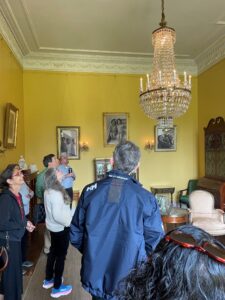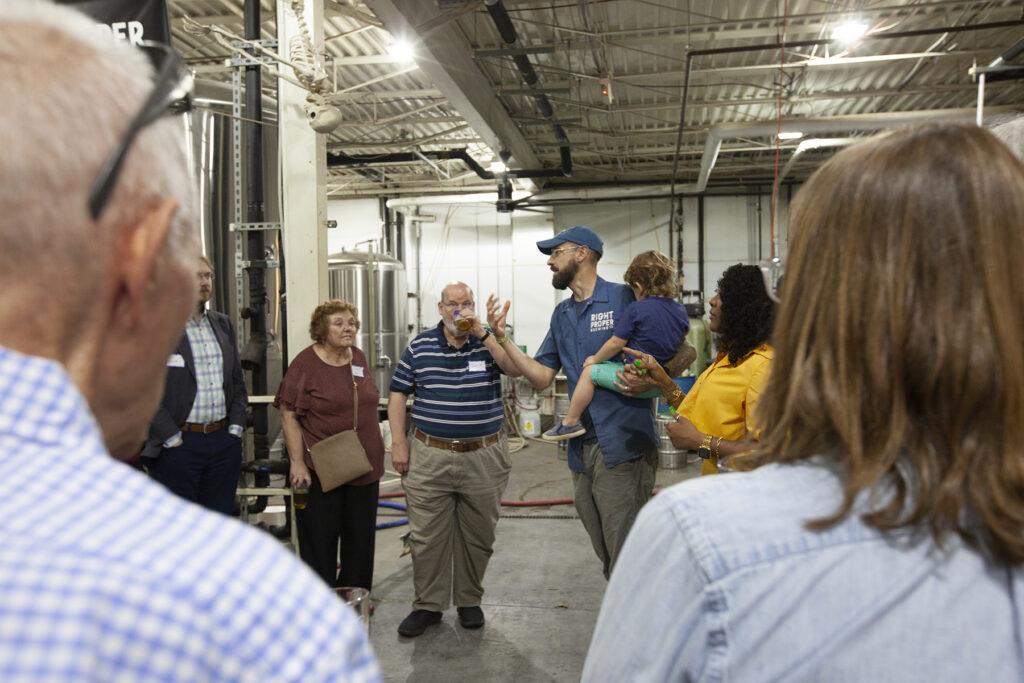Although the DC History Center has been operating under our new name, vision, and mission for the last four years, our organization’s origins as the Columbia Historical Society and then the Historical Society of Washington, DC are the foundation of our work, even as we define the organization we want to be today. In the US, historical societies gained popularity in the 19th century, formed by concerned citizens for the purpose of preserving important documents and objects. However, a defining attribute of these societies was an exclusionary and elitist membership practice. Members of historical societies tended to represent a largely white, male, and wealthy audience. Who could join these societies did expand over time, but they continued to be filled with predominantly white and wealthy members. As a result, the types of history collected and preserved by these groups reflected their members.
The DC History Center updated our name, mission, and vision in 2020 as a way to signal a shift in our priorities, reflecting on what responsibility we had to the DC community and what kind of work we wanted to offer to DC residents.
Although we knew that our membership program was an important update to make for our organization, this undertaking represented a major change after years of a fairly consistent program. Aside from some shifts in the number of levels available and their names, our base pricing for membership hadn’t changed in almost two decades. Now that the DC History Center was a community-based nonprofit organization, how could we reflect our priorities through our membership program?
As the development manager at the DC History Center, I was tasked with answering this question. Guided by our JEDI principles, I knew that our new membership program needed to be more inclusive and accessible to our growing audiences. It also needed to reflect our organization’s cultural shift, expressing a more friendly and casual community rather than a formal or elite membership program. With a desire to invite our new audience members to this updated program in a way that would feel informal and warm, we were drawn to using the word “Friend.” This language is embedded into our new levels, but also in our marketing for the new program, encouraging potential members with the slogan “Let’s be friends!”

Beyond language, tangible changes were made to our pricing model in an effort to make membership more accessible. Because the membership program is a large source of income for the DC History Center, updates to our pricing had to bridge the gap between our JEDI initiatives and our fiscal sustainability. In an early draft, I pitched an entirely free level of membership as an entry point for new members. While fitting with our values of inclusivity and accessibility for those who cannot spend funds on cultural heritage memberships, we realized budgetary projections that this action would be a financial risk for our small organization. With this in mind, I worked with other DC History Center staff to determine a more accessible price point to our audience, ultimately leading to our $20 Friend level membership.
While we were expanding our levels of membership into lower pricing brackets, we were also adjusting our prices at the higher levels as well. In some cases, the cost of the benefits had exceeded the price of that membership level. This is particularly clear with Washington History magazine, one of our primary benefits of membership. By 2023, the $50 membership level was barely covering the cost of production, printing, and mailing of the two annual issues, leaving no additional income for the DC History Center. Adjusting our prices to reflect the true value of the work we produce was an important change in our pricing, and allows our organization a more sustainable source of income in the long term.
In past iterations of the membership program, there were also higher levels of membership available, but they were not advertised on our website or any of our membership communications. Rather than continuing to feed this practice that suggests exclusivity, we made these higher level memberships publicly available on our website, now known as “Investor” level memberships.
While there are many new benefits at these Investor levels, it is critical to us that some benefits remain accessible to members at every level. The DC History Center already offers a slew of free content-based programs each year, so it was most important to me to create events for members that prioritized community building and connection among members who share a common interest in local history.

We’ve held three members-only programs so far this year. Working with a partner organization, we were excited to offer members a free tour of Tudor Place’s Ancestral Spaces installation with curator Rob DeHart. Another was our member-only tour of Right Proper Brewing, held as a pre-event to our Washington History Release Party. This event included a free Senate beer and invited conversation and community building, giving members a behind-the-scenes look at the brewery while inviting them to stay and eat, drink, and discuss the latest issue of the magazine with us throughout the evening.
As we near the first anniversary of this change in October, the new membership program updates are incomplete and don’t yet meet all the needs of current and potential members. And yet, the program has also had some success: as of today, our organization is proud to have over 670 friends! As we reflect on the year, we look forward to inviting feedback and discussion so we can continue to improve the experience for our current members and create the best possible experience for our new community.
 Sajel Swartz is the manager of foundation and individual giving at the DC History Center, joining the staff in 2022. A trained public historian, Sajel also brings experience in communications, event planning, and project management to her fundraising work. Raised in Kentucky, Sajel has lived in the DC Metro area for six years in Bloomingdale and Mount Pleasant, and is proud to call the city home. She holds a master’s degree in public history from American University and a bachelors from Centre College, where she majored in history.
Sajel Swartz is the manager of foundation and individual giving at the DC History Center, joining the staff in 2022. A trained public historian, Sajel also brings experience in communications, event planning, and project management to her fundraising work. Raised in Kentucky, Sajel has lived in the DC Metro area for six years in Bloomingdale and Mount Pleasant, and is proud to call the city home. She holds a master’s degree in public history from American University and a bachelors from Centre College, where she majored in history.